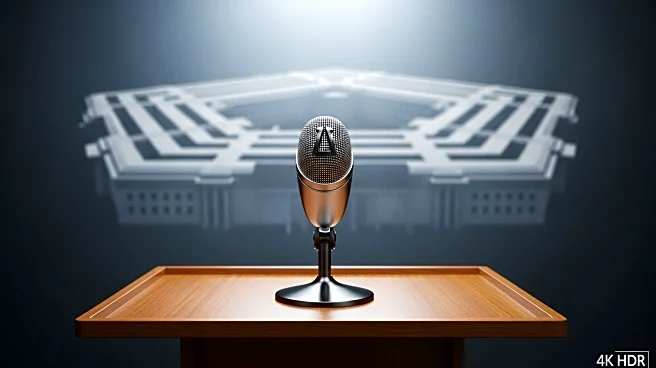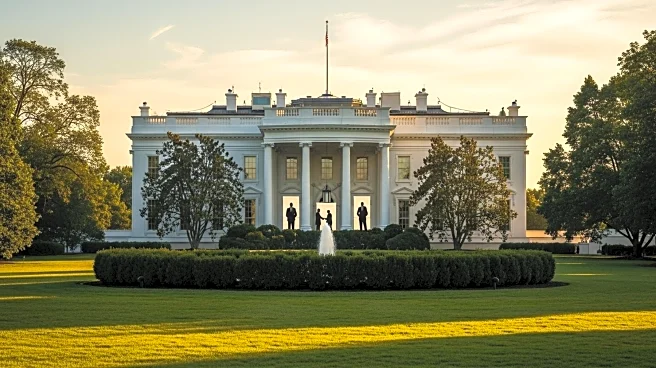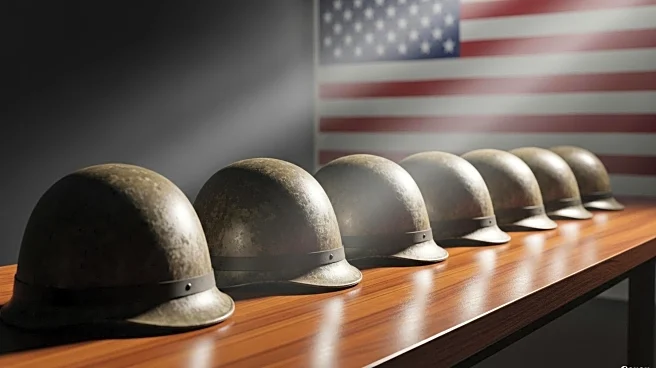What's Happening?
A significant assembly of U.S. military leaders took place at the Marine Corps Museum in Quantico, Virginia, where hundreds of generals and admirals were summoned from their global posts. The meeting was led by Defense Secretary Pete Hegseth, who introduced 10 new directives aimed at reshaping military standards. These directives focus on physical fitness, grooming, and reinstating 'the highest male standard' for combat roles. President Trump also addressed the gathered military leaders, underscoring the importance of these changes. The event was covered by the BBC's Bernd Debusmann, highlighting the unusual nature of such a large-scale military meeting.
Why It's Important?
The introduction of these new directives marks a significant shift in military policy, potentially affecting the operational standards and culture within the U.S. armed forces. By emphasizing physical fitness and grooming, the directives aim to enhance the readiness and discipline of military personnel. The return to 'the highest male standard' for combat positions may spark discussions on gender roles and equality within the military. These changes could impact recruitment, training, and the overall effectiveness of the U.S. military, influencing both domestic and international perceptions of American military strength.
What's Next?
The implementation of these directives will likely involve adjustments in training programs and evaluation criteria across the military branches. Reactions from military personnel and advocacy groups may vary, with some supporting the focus on fitness and discipline, while others may raise concerns about inclusivity and gender equality. The directives could also prompt legislative scrutiny or debate, particularly regarding their alignment with broader defense policies and goals. Monitoring the impact of these changes on military operations and personnel morale will be crucial in the coming months.
Beyond the Headlines
The emphasis on traditional standards in the military may reflect broader cultural and political trends within the U.S. government. This shift could influence public discourse on military values and the role of the armed forces in society. Additionally, the focus on physical standards may lead to discussions about the balance between maintaining combat readiness and fostering a diverse and inclusive military environment. The long-term effects of these directives on military recruitment and retention, particularly among women and minority groups, will be an area of interest for policymakers and military leaders.











